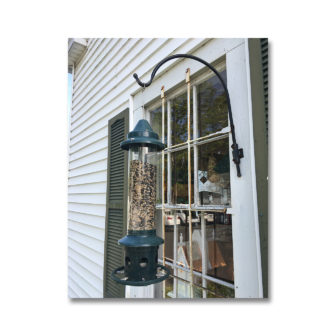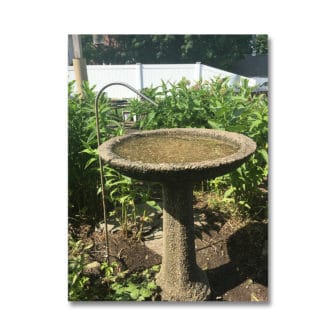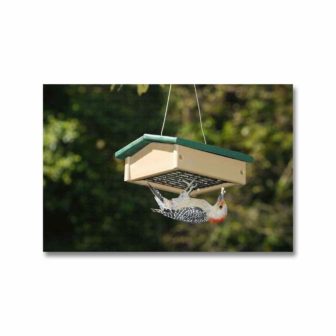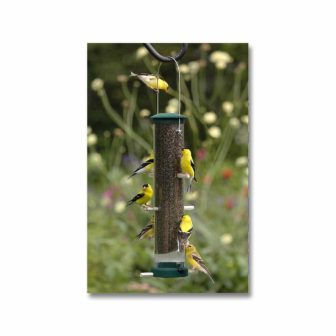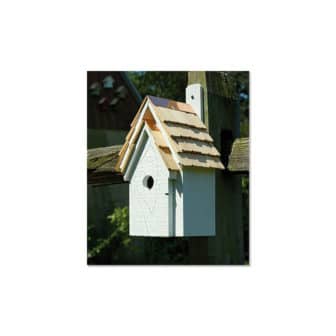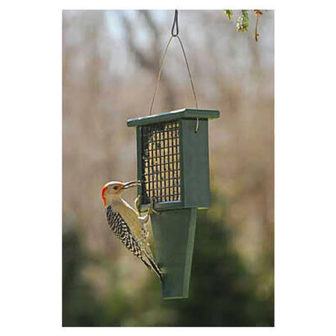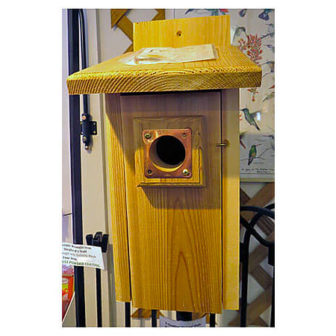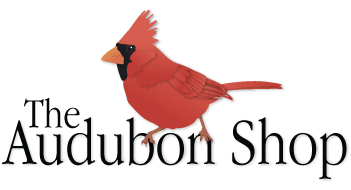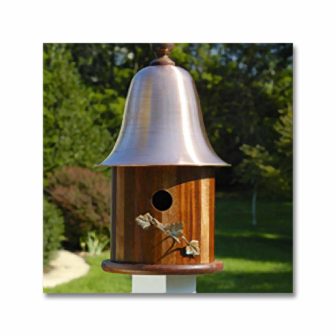How to Make Your Yard a Haven for Birds
Imagine walking out into your yard on a late spring morning, seeing and hearing birds, butterflies and and bees, or watching Bluebirds bringing nesting materials in to start a new brood. Sit down to enjoy your first cup of tea or coffee of the day, take an outdoor lunch break, or make an inviting space to enjoy a glass of wine in the evening, and you’ll feel the cares of the day melt away. It’s easy and rewarding to make your yard a haven for birds.
Attracting birds and other wildlife is a two-way street. We like to feel that we are helping them even in some small way, and by bringing them closer to us we in turn get to enjoy their beauty.
Enhancing your yard for birds is easy to do, there are many resources today, and plans can be phased in over several years. Depending on where you live, your habitat characteristics (wet vs. dry, etc) and planting zone, you can begin to dream up ways to make your plot of land more inviting to nature.
Many states have free resources for those looking for plants that will thrive in their own climate. Here in CT, a good place to start is CT Botanical Society, but there are many more. Adding flowering and berry producing plants and shrubs may attract birds that don’t come to bird seed, such as Catbird, Robin, Cedar Waxwing, Mockingbird, Baltimore Oriole and more.
~~~~~~~~~~~~~~~~~~~~
First, it’s best to understand what birds need to survive and thrive. This can be drilled down to three basic needs, similar to human needs: food, cover and water.
Second, it’s important to keep your pet cats indoors. Please do not offer bird seed if you let your house cats outdoors. Cats are healthier and live longer when kept inside, too. Outdoor cats literally kill thousands of birds a year. They are hardwired to hunt, they can’t help it. And we love cats, just not outdoors.
~~~~~~~~~~~~~~~~~~~~
FOOD
Setting up a feeding station for songbirds is one of the first ways most of us start the hobby of bird watching. An all-encompassing feeding station takes into account the several types of birds that will come to seed that we provide in feeders. Birds can be broken down into two basic groups: ground feeders and tree clingers.
Ground feeders are birds that feed on the ground. Mourning Doves, sparrows, jays, Cardinals, Juncos, and more make up this group.
Birds that perch, climb and cling onto trees include Chickadees and their cousins the Titmice, nuthatches, woodpeckers, finches, bluebirds and more. Every feeder we have in the shop can be broken down into three basic types.
1. Tube Feeders: this is just what it sounds like, usually a clear tube that holds seed and has perches and ports for birds to access seed. Some tube feeders can be accessorized with a tray that will catch seed and provide more space for birds to feed.
The advantage of tube feeders is that they are easy to fill and maintain. They can be hung from a garden pole, a tree or in front of a favorite window on your house. Tube feeders come in a few sizes. We generally like the larger capacity tubes because we don’t have to fill them as often. Some tube feeders have features that make them squirrel proof.
2. Trays and Hopper Feeders: think of a tray as a piece of ground up in the air. The larger the tray or hopper, the more birds can spread out and feed. Ground feeders tend to give each other space when feeding. Watch your Mourning Doves as they walk about the ground picking up seed.
The advantage to a Hopper is that it has a receptacle to keep seed dry, and will dispense seed to the tray on either side. An open tray is fun because it offers the best views of the birds. Some trays come with a roof to keep snow and rain off the seed.
3. Suet Feeders: Beef, lamb or mutton suet has been known to be a high energy food for birds and animals for over 100 years, even documented in the late 1800’s. Who eats suet? Woodpeckers (even Pileated), Carolina Wren, Bluebirds, Nuthatches, Crows, jays and more.
Suet cakes that are commercially available are safer than raw suet as they have been rendered (cooked) to get rid of harmful bacteria. Stick with simple suet – nothing fancy.
We sell 4 kinds – our top selling suet is Nutty Treat, #2 is Hot Pepper Suet (mammals don’t like it, it does not hurt birds at all), followed by Plain Suet (no Blackbirds), and Insect Suet (Bluebirds and others).
Suet feeders have evolved, and our favorite is the Tail Prop Suet Feeder, but we do appreciate simple cages. Some hopper feeders have built in suet cages, a bonus.
4. Natural food sources will be just as important. Find native flowering plants, shrubs and trees that bring insects into your yard and the birds will follow. By planting berry producing shrubs, you may be visited by birds that specifically eat the berries and don’t come to your bird feeders.
COVER
1. Take a look at your yard’s landscape – are there areas where birds can tuck in and feed safely away from birds of prey or cats? Are there plants that offer flowers, fruit or nectar in season?
Read up on what plants will support wildlife. Pollinator Pathways is a great resource. Take a trip to your local nursery versed in the plants that are native to your area. **Resist the urge to buy exotics at the big box stores.** We need to build our local landscapes back up so that we support our own natural ecosystems.
2. How about a pretty and functional nesting box, aka bird house – think just one in the front yard and one in the back yard. Birds need to be secretive when nesting, so keep the bird houses out of sight of each other. Eastern Bluebirds, Chickadees and House Wrens are among the birds that will use a cavity in the wild and a nesting box in your yard.
All of our nesting boxes are built to specifications that will attract our cavity nesters, and all are easy to clean out.
WATER
Fresh water can be offered in a simple bird bath or even a plant saucer tucked into your landscape. Just be sure to clean out your baths, especially after rain. 1 tsp of bleach to a cup of water will do the trick. Use a soft brush, such as the Bird Bath Brush.
There are three good options if mosquitoes are a concern:
1. Use a Water Wiggler (read more)
2. Use a Dripper
3. Dump any standing water on the driveway, mosquito eggs will not survive.
